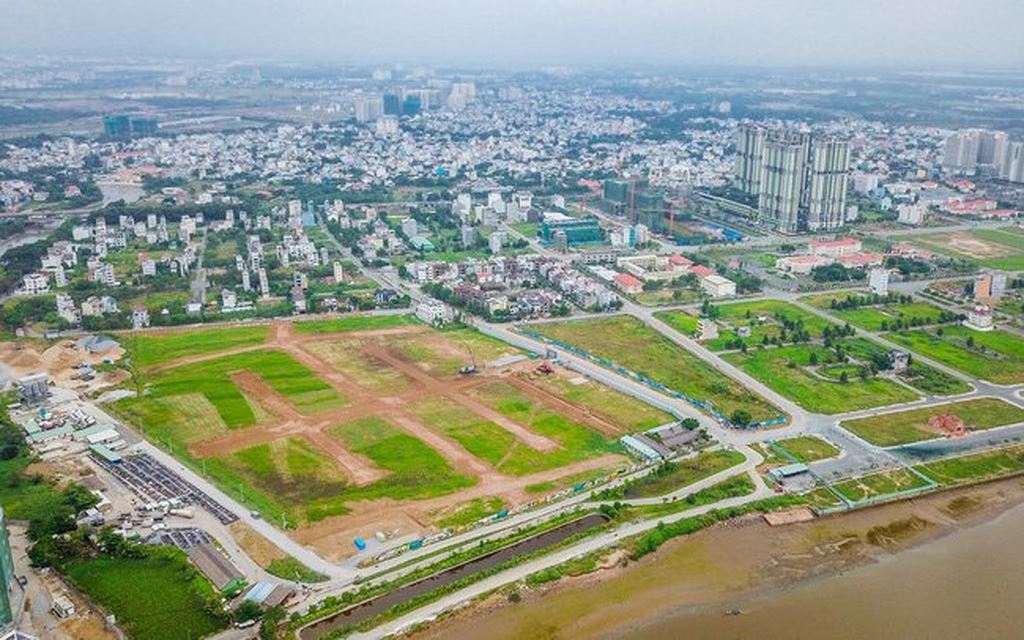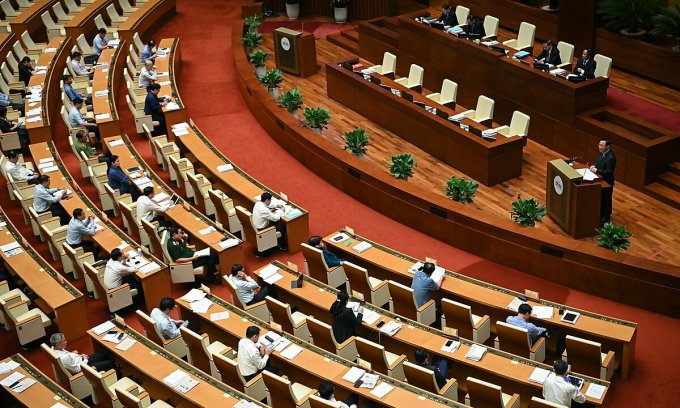Can non-agricultural land be built in accordance with Vietnamese law?

“Hello Lawyer, I have a piece of non-agricultural land in District 7 with a total area of 47m2 and need to build a house. However, I am still unclear about the regulations on non-agricultural land or land. Can non-agriculture build houses? Please advise.”. Hi, according to the current land law, the land is divided into 03 types, agricultural land, non-agricultural land, and unused land. So what is non-agricultural land? Can non-agricultural land be built for housing? Today, LSX Lawfirm will give you an article about “Can non-agricultural land be built in accordance with Vietnamese law?“, as follows:
Legal grounds
Land Law 2013
Circular 02/2015/TT-BTNMT
What is non-agricultural land?
The non-agricultural land island is not used for agricultural purposes such as farming or raising livestock.
According to Clause 2, Article 10 of the 2013 Land Law, non-agricultural land groups include the following types of land:
- Residential land includes residential land in rural areas, residential land in urban areas;
- Land for construction of the agency’s headquarters;
- Land used for defense and security purposes;
- And Land for construction of non-business works includes land for construction of headquarters of non-business organizations; land for construction of cultural, social, medical, educational, and training facilities, physical training and sports, science and technology, diplomacy, and other non-business works;
- Land for non-agricultural production and business, including land in industrial parks, industrial clusters, and export processing zones; commercial and service land; land for non-agricultural production establishments; land used for mineral activities; then land for production of building materials and pottery;
- And Land used for public purposes includes land for traffic (including airports, airfields, inland waterway ports, seaports, railway systems, road systems, and other traffic works); irrigation; land with historical-cultural relics and scenic spots; then land for community activities, public amusement, and entertainment areas; land for energy works; then land for post and telecommunications works; market land; land for disposal, waste treatment, and other public works land;
- Then Land for religious and belief establishments;
- Land for cemeteries, graveyards, funeral homes, and crematoriums;
- And Land for rivers, canals, canals, streams, and specialized water surfaces;
- Other non-agricultural land includes land for rest houses, shacks, and camps for workers in production establishments; land for the construction of warehouses and houses to store agricultural products, pesticides, fertilizers, machinery, and tools in service of agricultural production and land for other construction works of land users for non-business purposes which not attached to residential land.
The bases for determining the type of soil
The determination of land type is based on one of the following bases:
- Firstly, Certificate of land use right, Certificate of house ownership and residential land use rights issued before December 10, 2009;
- Secondly, Certificates of land use rights, ownership of houses, and other land-attached assets;
- Thirdly, Papers on land use rights specified in Clauses 1, 2, and 3, Article 100 of this Law, for cases where the Certificate has not granted as prescribed in Clause 1 of this Article;
- Fourthly, A competent state agency’s decision on land allocation, land lease, or permission to change the land use purpose, for cases where the Certificate has not issued as prescribed in Clause 1 of this Article;
- Finally, For cases where the papers specified in Clauses 1, 2, and 3 of this Article are not available, the determination of land type shall comply with the Government’s regulations.
Can non-agricultural land build houses?
According to Clause 1, Article 6 of the 2013 Land Law, one of the principles when using land is to “correct land use purposes”. Thus, the construction of houses on non-agricultural land must be suitable for the purpose of land use. If the non-agricultural land is residential land, it allowed to build houses.
If the non-agricultural land is not residential land, it is necessary to carry out the procedures for changing the land use purpose. For example, if building a house for living, it is necessary to carry out procedures to change the purpose of using non-agricultural land which is not residential land to residential land.
Order of changing the purpose of non-agricultural land use to residential land
- Firstly, The land user submits an application for the change of land use purpose together with the Certificate to the natural resources and environment agency.
- Secondly, The natural resources and environment agency is responsible for verifying the dossier; verifying the field, assessing the need to change the land use purpose; guiding land users to fulfill their financial obligations as prescribed by law; submit to the People’s Committee at the competent level for decision permitting the change of land use purpose; directing the updating and correction of land databases and cadastral records.
- Thirdly, In case the investor receives the transfer of the land use right of the person currently using the land for the implementation of an investment project, the procedures for transferring the land use right shall be carried out concurrently with the procedure for permitting the change of land use purpose land.
- Finally, Land users fulfill financial obligations as prescribed.
Application for change of land use purpose
- Firstly, An application for change of land use purpose (made according to Form No. 09/DK issued together with Circular No. 24/2014/TT-BTNMT and amended in Clause 18, Article 7 of Circular 33/2017/TT-BTNMT);
- Secondly, Certificate of land use right or Certificate of ownership of houses and residential land use rights or Certificate of land use rights and ownership of houses and other assets attached to the land.
Note: Without a certificate of land use rights, ownership of houses, and properties attached to the land, they are not eligible to apply for land use purpose change.
Specifically, according to the provisions of Article 69 of Decree No. 43/2014/ND-CP on the order and procedures for permitting the change of land use purpose as follows:
The land user submits an application for the change of land use purpose together with the Certificate to the natural resources and environment agency.
The natural resources and environment agency is responsible for verifying the dossier; verifying the field, assessing the need to change the land use purpose; guide land users to fulfill their financial obligations as prescribed by law;
In case the investor receives the transfer of the land use right of the person currently using the land for the implementation of an investment project, the procedures for transferring the land use right shall be carried out concurrently with the procedure for permitting the change of land use purpose. land.
The time to carry out procedures for land use purpose change is not more than 15 days.
Consulting service of LSX Lawfirm
Above is LSX Lawfirm’s advice on the content of the problem “Can non-agricultural land be built in accordance with Vietnamese law?“. And all the above knowledge to use in work and life. If you have any questions and need more advice and help, please contact the hotline for the reception. Lawyer X is a place that provides reputable and fast business services at reasonable prices. Customers will be extremely satisfied when using our services.
- FB: www.facebook.com/luatsux
- Tiktok: https://www.tiktok.com/@luatsux
- Youtube: https://www.youtube.com/Luatsux
Related article
Convert agricultural land to farmland in Vietnam
Limits for receiving transfer of agricultural land use rights in Vietnam
Extension of tax payment and agricultural land rental in Vietnam
How to buy agricultural land in Vietnam without a red book?
Related questions
In addition to non-agricultural land, other types of land are agricultural land and unused land
– Firstly, Personal income tax
– Secondly, the Registration fee
– Thirdly, Other fees
Accordingly to the provisions of Point h, Clause 1, Article 10 of the 2013 Land Law, Other agricultural land includes land used to build greenhouses and other types of houses for cultivation purposes, including other forms of cultivation. directly on the ground; building barns for raising cattle, poultry, and other animals permitted by law; land for cultivation, animal husbandry, and aquaculture for the purpose of study, research, and experiment; land for nursery seedlings, seedlings, and land for planting flowers and ornamental plants;
Therefore, it can be affirmed that garden land is agricultural land, it belongs to another type of agricultural land used to grow annual and perennial crops on the same plot as residential land.
Contact LSX Lawfirm
Finally, hope this article is useful for you; answer the question: “Can non-agricultural land be built in accordance with Vietnamese law?“. If you need more information, please contact LSX Law firm: at +84846175333 or Email: [email protected].
Conclusion: So the above is Can non-agricultural land be built in accordance with Vietnamese law?. Hopefully with this article can help you in life, please always follow and read our good articles on the website: lsxlawfirm.com




